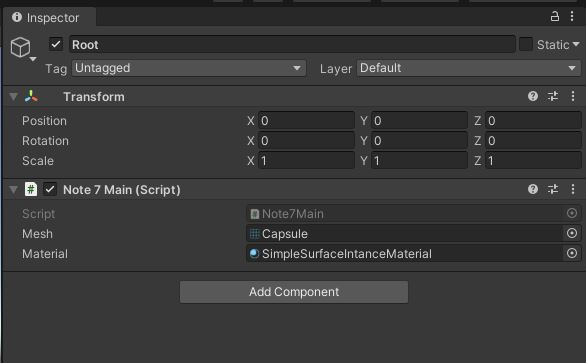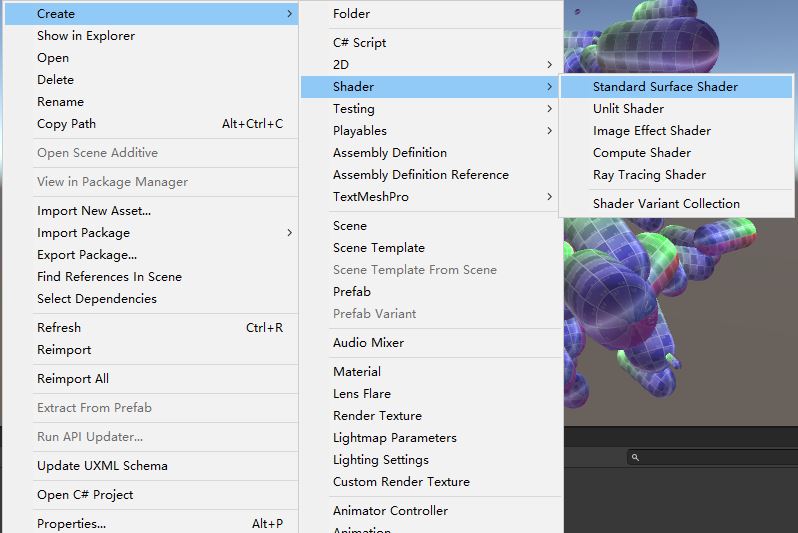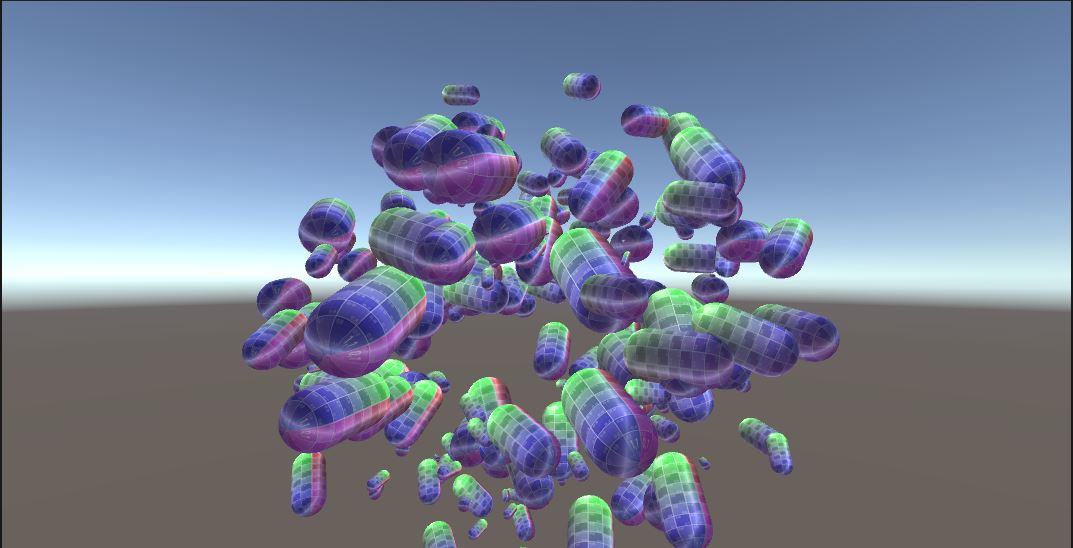Unity3D學習筆記7——GPU範例化(2)
2022-07-08 15:01:16
1. 概述
在上一篇文章《Unity3D學習筆記6——GPU範例化(1)》詳細介紹了Unity3d中GPU範例化的實現,並且給出了詳細程式碼。不過其著色器實現是簡單的頂點+片元著色器實現的。Unity提供的很多著色器是表面著色器,通過表面著色器,也是可以實現GPU範例化的。
2. 詳論
2.1. 實現
首先,我們還是掛接與上篇文章一樣的指令碼:
using UnityEngine;
[ExecuteInEditMode]
public class Note7Main : MonoBehaviour
{
public Mesh mesh;
public Material material;
int instanceCount = 200;
Bounds instanceBounds;
ComputeBuffer bufferWithArgs = null;
ComputeBuffer instanceParamBufferData = null;
// Start is called before the first frame update
void Start()
{
instanceBounds = new Bounds(new Vector3(0, 0, 0), new Vector3(100, 100, 100));
uint[] args = new uint[5] { 0, 0, 0, 0, 0 };
bufferWithArgs = new ComputeBuffer(1, args.Length * sizeof(uint), ComputeBufferType.IndirectArguments);
int subMeshIndex = 0;
args[0] = mesh.GetIndexCount(subMeshIndex);
args[1] = (uint)instanceCount;
args[2] = mesh.GetIndexStart(subMeshIndex);
args[3] = mesh.GetBaseVertex(subMeshIndex);
bufferWithArgs.SetData(args);
InstanceParam[] instanceParam = new InstanceParam[instanceCount];
for (int i = 0; i < instanceCount; i++)
{
Vector3 position = Random.insideUnitSphere * 5;
Quaternion q = Quaternion.Euler(Random.Range(0.0f, 90.0f), Random.Range(0.0f, 90.0f), Random.Range(0.0f, 90.0f));
float s = Random.value;
Vector3 scale = new Vector3(s, s, s);
instanceParam[i].instanceToObjectMatrix = Matrix4x4.TRS(position, q, scale);
instanceParam[i].color = Random.ColorHSV();
}
int stride = System.Runtime.InteropServices.Marshal.SizeOf(typeof(InstanceParam));
instanceParamBufferData = new ComputeBuffer(instanceCount, stride);
instanceParamBufferData.SetData(instanceParam);
material.SetBuffer("dataBuffer", instanceParamBufferData);
material.SetMatrix("ObjectToWorld", Matrix4x4.identity);
}
// Update is called once per frame
void Update()
{
if (bufferWithArgs != null)
{
Graphics.DrawMeshInstancedIndirect(mesh, 0, material, instanceBounds, bufferWithArgs, 0);
}
}
private void OnDestroy()
{
if (bufferWithArgs != null)
{
bufferWithArgs.Release();
}
if (instanceParamBufferData != null)
{
instanceParamBufferData.Release();
}
}
}
不過,指令碼的材質設定需要使用我們新的材質:

這個材質可以通過使用Standard Surface Shader作為我們修改的模板:

修改後的著色器程式碼如下:
Shader "Custom/SimpleSurfaceIntanceShader"
{
Properties
{
_Color ("Color", Color) = (1,1,1,1)
_MainTex ("Albedo (RGB)", 2D) = "white" {}
_Glossiness ("Smoothness", Range(0,1)) = 0.5
_Metallic ("Metallic", Range(0,1)) = 0.0
}
SubShader
{
Tags { "RenderType"="Opaque" }
LOD 200
CGPROGRAM
// Physically based Standard lighting model, and enable shadows on all light types
#pragma surface surf Standard fullforwardshadows
#pragma target 4.5
#pragma multi_compile_instancing
#pragma instancing_options procedural:setup
struct InstanceParam
{
float4 color;
float4x4 instanceToObjectMatrix;
};
#ifdef UNITY_PROCEDURAL_INSTANCING_ENABLED
StructuredBuffer<InstanceParam> dataBuffer;
#endif
float4x4 ObjectToWorld;
sampler2D _MainTex;
struct Input
{
float2 uv_MainTex;
};
half _Glossiness;
half _Metallic;
fixed4 _Color;
void setup()
{
#ifdef UNITY_PROCEDURAL_INSTANCING_ENABLED
InstanceParam data = dataBuffer[unity_InstanceID];
unity_ObjectToWorld = mul(ObjectToWorld, data.instanceToObjectMatrix);
#endif
}
void surf (Input IN, inout SurfaceOutputStandard o)
{
// Albedo comes from a texture tinted by color
fixed4 c = tex2D (_MainTex, IN.uv_MainTex) * _Color;
o.Albedo = c.rgb;
// Metallic and smoothness come from slider variables
o.Metallic = _Metallic;
o.Smoothness = _Glossiness;
o.Alpha = c.a;
}
ENDCG
}
FallBack "Diffuse"
}
最後的顯示效果如下:

2.2. 解析
對比修改之前的著色器程式碼:
#pragma multi_compile_instancing的意思是給這個著色器增加了範例化的變體,也就是增加了諸如INSTANCING_ON PROCEDURAL_ON這樣的關鍵字,可以編譯範例化的著色器版本。#pragma instancing_options procedural:setup是搭配Graphics.DrawMeshInstancedIndirect使用的,在頂點著色器階段開始時,Unity會呼叫冒號後指定的setup()函數。- setup()函數的意思是通過範例化Id也就是unity_InstanceID,找到正確的範例化資料,並且調整Unity的內建變數unity_ObjectToWorld——也就是模型矩陣。正如上一篇文章所言,GPU範例化的關鍵就在於模型矩陣的重新計算。在Unity API官方範例中,還修改了其逆矩陣unity_WorldToObject。
3. 參考
- 《Unity3D學習筆記6——GPU範例化(1)》
- Graphics.DrawMeshInstancedIndirect
- Declaring and using shader keywords in HLSL
- Creating shaders that support GPU instancing